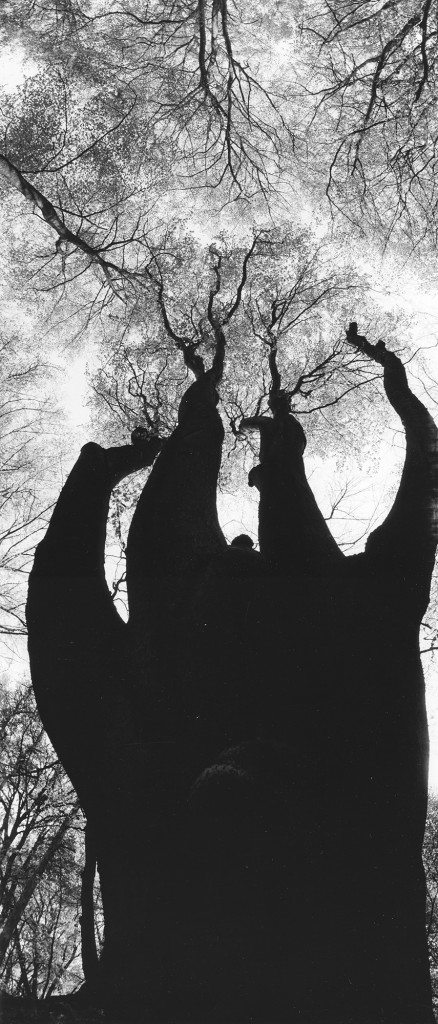Janusz Nowacki - there was a forest

I look at the shadow cast by the tree. The white man's civilization begins with a "tree of life," and each individual is entitled to a pair of planks at the end of his life. Without wood, there would have been no Noah's Ark or Christopher Columbus. Nor would there likely have been a kola or a cross. Without the "tree of the knowledge of good and evil," there would be no original sin, and thus no family trees, and no father would plant a tree to grow with his son. There would be no Christmas tree, no rocking horse, no Pinocchio and not even a campfire from the cradle to the "krishka". So what would have been ? I don't know, but it could be soon, because apparently we are trying to cut down the entire stand of trees that could genetically remember Eden.
A panting Amazon battered by amputations. Africa is balding from tobacco drying. In Europe, the last virgin forest, the Belovezhskaya Pushcha, is still doing well only on the Belarusian side. Almost all the trees that our ancestors planted along the roads have already been cut down, and rogalin oaks are being cut down, because they are great wood for smoking sausage. Instead, poplars and pines are planted, evenly, under a string, so that when they grow up they look like a stray army dormant between attention and rest. In such a forest, there is no more room for ghosts nesting in the weeds, hollows and swamps. There is no room for witches, for mushrooms, for game - even the light seems the same everywhere when the sun is not shining.
All this and many other thoughts come to my mind when I look at Janusz Nowacki's photographs of beech trees He took these photos with a panoramic camera, vertically clipping the ground and roots. And because in this camera the lens moves in a circle he got the perspective and field of view of "lying under a pear tree". The perspective of someone who has time to admire what's going on up there.



I am first attracted by the power of light trying to break through the veil of leaves. I can see and feel in what great harmony the trees in this forest coexist; there is no empty, wasted space, the sky can be seen as much as the light necessary below. There is so much intruding light that even the tree trunks are drowned in underexposed darkness. This technical frailty of photography in extreme contrasting lighting shrouds the entire stateliness of the shapes of trunks and branches in a secret theater of shadow and half-shadow. The area closed to the eye is taken over by the imagination. This forest has been treated as if it were a lofty cathedral, in whose gloomy aisles rest relics from excess light protected by stained glass windows. So much so, that in his forest cathedral Nowacki is like a lonely goad maker, conjuring up all sorts of specters, phantoms, phantoms and ghosts in dark hollows. Another interesting side of these photographs: the distinctly feminine (at times even erotic) forms of the trunks. Combined in diptychs or triptychs, the vertical panoramas further enhance the impression of the presence of the female element, even when the beeches appear to be a group of praying monks in holey habits. After all: why not?




I know how strongly connected Janusz is with nature, how much he loved the mountains and water, what part of his life he devoted to the aforementioned Rogalin oaks. Once he even took me to his favorite oak trees and showed me how "trees die standing". Because in Janusz Nowacki's works beeches are only a fragment of his sincere and undisguised fascination with nature. At the same time, he has an equal love for photography, to which he has been applying all his other loves stubbornly and consistently for years.
Janusz Nowacki, Under the Dome of the Forest, 1984-1985 / text originally appeared in the catalog of Janusz Nowacki's exhibition at the Blank Gallery





